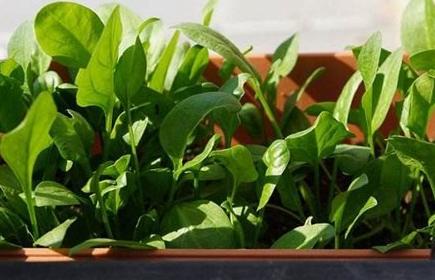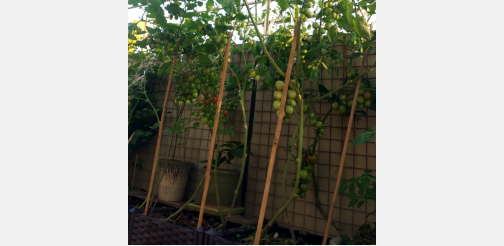What are the benefits of peppers growing stout? How do you make a pepper grow thick? How can a pepper stalk be thick if it's thin?
The thickness of chili seedlings can significantly affect their later growth and yield. To ensure that chili plants grow well later on, nurturing during the seedling stage is crucial, such as making the chili grow strong and thick. This article from fanmimi shares the benefits of strong chili growth and how to make chili grow thick. How can you make a thin chili stem thicker?
Benefits of Strong Chili Growth
Growth Rate:
A good foundation grows faster. Strong chili seedlings usually grow faster than thin and weak seedlings. Strong seedlings can better absorb water and nutrients, providing more energy for growth and development, thus forming a robust plant more quickly.
Resistance:
Strong chili seedlings are relatively resistant to diseases and can better resist pests, extreme temperatures, and other environmental pressures. In contrast, thin and weak seedlings are more susceptible to adverse external conditions and may be more prone to disease or stunted development.
Yield and Fruit Quality:
Strong chili plants usually produce more branches and leaves, providing more nutrients and energy for the fruit, leading to higher yields. Moreover, strong plants often have stronger root systems, which can absorb more nutrients and provide better conditions for fruit growth.
Pest and Disease Prevention:
Stronger bodies have stronger resistance. Strong plants are generally more resistant to pests and diseases than thin and weak plants. Chili seedlings are susceptible to common pests and diseases in the early stages of growth, such as leaf mold, aphids, and powdery mildew. Strong chili seedlings can better resist these pests and diseases, reducing losses.
How to Make Chili Grow Strong and Thick? How to Make a Thin Chili Stem Thicker?
1. Soil Selection:
Choose soil that is rich in organic matter and has good drainage. Chilis like loose soil, and you can add composted manure or leaf mold to improve soil texture.
Loose soil promotes the growth of chili roots, leading to a more developed root system, absorbing more nutrients, and making chili grow stronger.
2. Adequate Sunlight:
Chilis like plenty of sunlight and require at least 6 to 8 hours of direct sunlight daily. Therefore, chili seedlings should be planted in well-lit areas, such as south-facing balconies, where sunlight is longer. North-facing balconies are not suitable for growing chilis due to lack of sunlight.
3. Suitable Temperature:
Chilis prefer a warm climate, with an ideal growth temperature of 20 to 30 degrees Celsius. Maintain a stable environmental temperature and avoid the impact of high or low temperatures on seedlings.
For example, most parts of the country are now experiencing high temperatures, far exceeding 30 degrees Celsius. We can use shading nets, which are common black mesh fabrics, and maintain ventilation to prevent high temperatures from affecting chili growth.
4. Moderate Watering:
Keep the soil moist but do not overwater to avoid root rot. Chilis like moist soil but do not like waterlogging. Ensure the top layer of soil is slightly dry before watering again.
Especially during the seedling stage, control the water, or the chili seedlings will grow too tall and thin, which will slow down their growth later. Seedlings that grow too tall and thin are recommended to be eliminated when transplanting.
5. Fertilization:
During the growth of chili seedlings, you can apply fertilizers rich in nitrogen, phosphorus, and potassium. For home planting, you can buy well-rotted organic fertilizers, such as fermented chicken manure or sheep manure, or use kitchen waste compost, which is more environmentally friendly.
Before transplanting chili seedlings, you can apply enough base fertilizer, and then apply top dressing fertilizer appropriately later, so that chili has sufficient nutrients to grow strong.
6. Timely Weeding and Pruning:
Keep the ground around the chili seedlings clean, weed regularly to reduce competition. At the same time, trim the top of the chili seedlings in time to promote the growth of side branches and a fuller plant shape.
Reduce competitors for chili, and the nutrients will be absorbed by the chili, otherwise, the fertilizer will be absorbed by weeds, which grow very fast, while the chili does not grow.
7. Survival of the Fittest:
You can grow more chili seedlings, for example, if you are preparing to plant 10 chilis, then grow 20 seedlings, and then select strong seedlings for transplanting later, and eliminate the weak seedlings. This also helps the growth of chili later, making it grow stronger.
Regarding the benefits of strong chili growth and how to make chili grow strong and thick, how to make a thin chili stem thicker, fanmimi has shared this much. Everyone is welcome to add more, and if you have any questions about growing vegetables, please leave a message or join the fanmimi vegetable planting group.
欢迎关注微信公众号:泛米米的小菜园
12本阳台种菜电子书限时免费送
关注【泛米米的小菜园】,发送“电子书”免费获取
随时随地在手机上学习交流阳台种菜
这篇文章出自 fanmimi 如需转载请注明出处;
这篇文章的地址:https://fanmimi.com/2024/570.html
本站部分资源收集于网络,纯个人收藏,无商业用途,如有侵权请及时告知!

 菠菜长不大,菠菜叶子变黄怎么办?为什么菠菜在春天会开花, 而且长势不好?
菠菜长不大,菠菜叶子变黄怎么办?为什么菠菜在春天会开花, 而且长势不好? 阳台楼顶盆栽番茄用多大的盆合适?种番茄用多大的盆?
阳台楼顶盆栽番茄用多大的盆合适?种番茄用多大的盆? 阳台种菜有虫子用什么药?环保的
阳台种菜有虫子用什么药?环保的 辣椒苗期应该使用什么样的肥料?
辣椒苗期应该使用什么样的肥料? 广州3月份可以种什么菜,阳台种菜
广州3月份可以种什么菜,阳台种菜 阳台种菜土壤改良正确方法,外面挖的土要怎么处理才能种菜
阳台种菜土壤改良正确方法,外面挖的土要怎么处理才能种菜 南昌蔬菜种子店铺大全|南昌哪有蔬菜种子卖,南昌最全最详细的蔬菜种子店铺
南昌蔬菜种子店铺大全|南昌哪有蔬菜种子卖,南昌最全最详细的蔬菜种子店铺 阳台种菜:空心菜卷叶,空心菜叶子发黄怎么回事?该怎么办
阳台种菜:空心菜卷叶,空心菜叶子发黄怎么回事?该怎么办